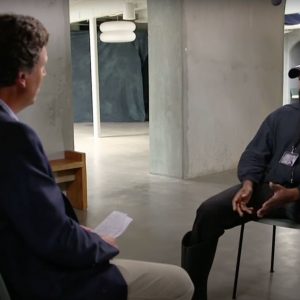
There is a consistent tension between the “sovereign’s” First Amendment Rights to free speech and assembly and the state’s chronic apprehensiveness about the creation of a dynamic and potentially unstable security situation. In the aftermath of the Berkeley Black Live Matter Protests, I personally was drawn to the interesting phenomenon of violent crowd dispersal and its assumed legitimacy as a crowd control tactic regularized by local police departments around the United States.
Max Weber’s insight into the domestic regulations imposed by the state seems very accurate in the modern context. The “state” has monopolized the use of violence and accorded unto itself legitimacy for utilizing violence. As I partook in the protests, the police justified their use of violence via teargas, batons, and rubber bullets by claiming that the people protesting were illegally congregating and that they were, in fact, a danger to the public. These two factors became the foundation upon which the police justified their use of violence to disperse the crowd.
In a historical context, many demonstrations that are now lauded for their moral authority were conducted outside the legal framework of the state. The most prominent example of this is the Birmingham Campaign of 1963 where the era’s dominant civil rights leaders like Martin Luther King Jr. were arrested for operating outside of legal boundaries. The city government had at that time obtained an anti-protest injunction on April 10th in order to quash the protests and other ongoing demands for equality. The Black Lives Matter movement similarly violated legal expectations in that it was unable to acquire the “permit for parade” necessary for such a large event utilizing public venues and streets. But unlike the civil rights activists at the Birmingham Campaign, the Berkeley Protest was a spontaneous groundswell of public appeal to the grand jury’s decision over the Eric Garner case. Protestors may have legal justification in this case to claim special exemption to city ordinances like in the case of the Chicago Capitol free speech settlement. Because the protests were spontaneous; the people were, for obvious reasons, unable to secure a “permit for parade.” A spontaneous event is “any gathering of people for the purpose of actively promoting any cause, whether by conducting a picket, parade, demonstration or the like (in) response to an unforeseen triggering event that has occurred within the preceding three calendar days.” But even if these protest had no legal grounds, local municipalities should not support violent crowd dispersal tactics especially against those who attempt peaceful demonstration. Many critics claim that in many cases violence used by the police is the only way to disperse an unrelenting crowd, but violence usually has the opposite effect of escalating conflict. Ultimately, the consistent utilization of violence by police leads to a protracted mistrust of authority that causes many of the systemic policing problems that society sees today.
The second justification that the police hold for violent dispersal is that there is an inherent security risk involved with large masses of people set in a high-tension situation. Ignoring the fact that violent action on behalf of the police creates higher tensions and potentially leads to a more unstable security dilemma, the modern policing policy is a clear example of how “elite security discourses identify and attack constructed threats that create self-fulfilling prophecies and institutionalize violence.” Ronnie D. Lipschutz Prof. of Politics at the University of Santa Cruz addresses the issue of police risk assessment by claiming that in many situations security forces react to a supposed “constructed threat” which in turn leads to the threats actualization. This is not to say that there is no inherent security risk behind unorganized protests and that risk is only “constructed;” there is a clear potential for property damage, violence against bystanders, and unwanted disruption of public goods. This is to note that in many situations, escalations of violence become realized in part because of police insensitivity.
Overall, protesting is an integral part of the freedom of speech. The ability to assemble under common interest and voice public concern is a hallmark tradition of civil rights advocacies that effectively attract media and political attention to the topic at hand. Police must play a difficult and careful role in regulating protests as they appear in the U.S.




